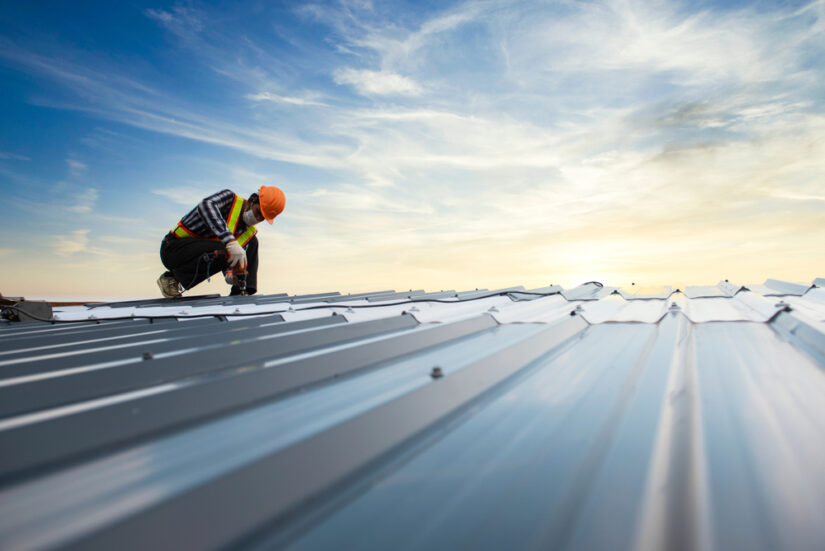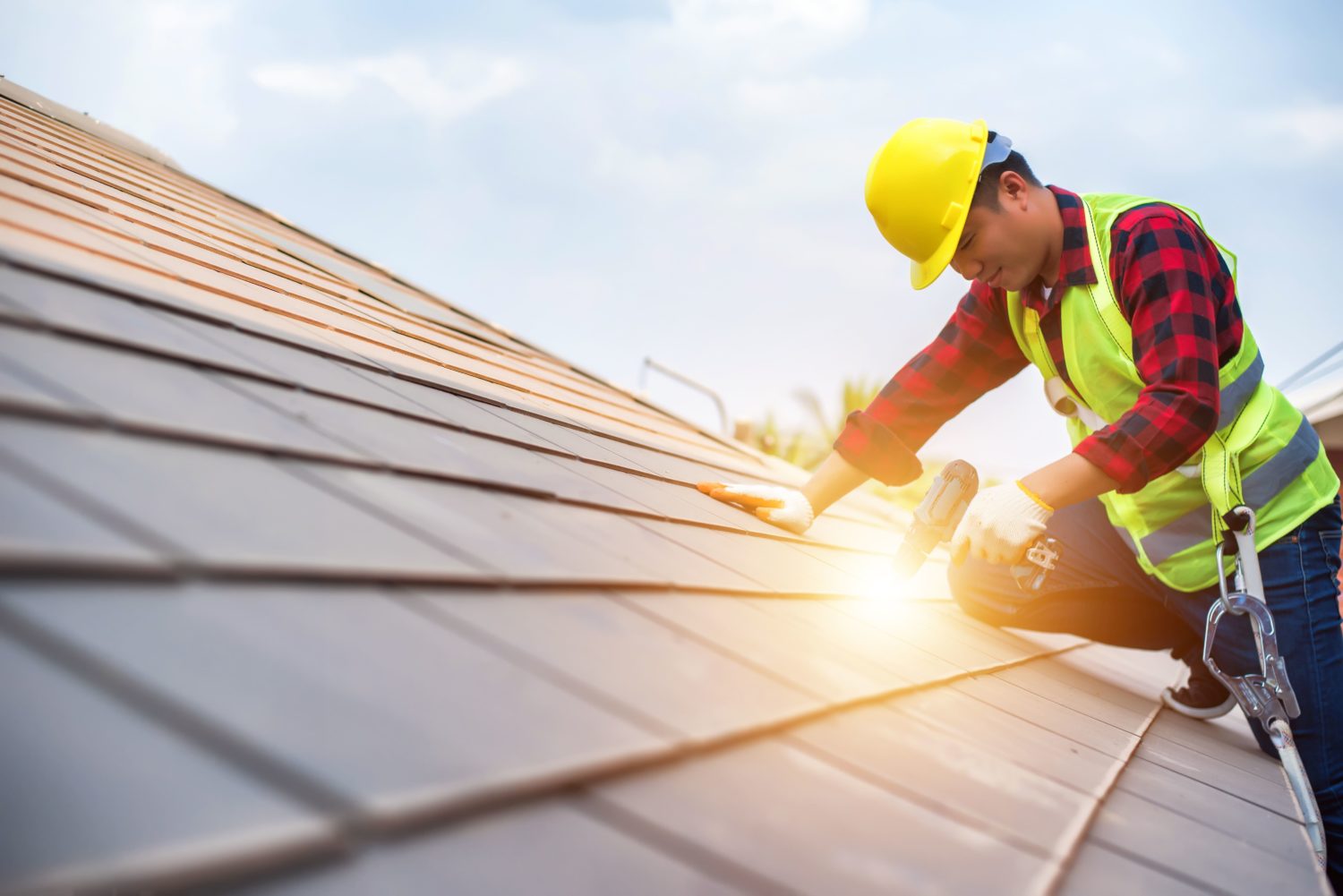Why Roofer Novi Recommends Upgrading to Reflective Shingles This Year
Why Roofer Novi Recommends Upgrading to Reflective Shingles This Year
Blog Article
Exactly How Climate Condition Can Impact Your Roof Longevity
Your roof covering deals with continuous obstacles from the weather condition, and it's essential to recognize exactly how these problems can reduce its life expectancy. UV rays can deteriorate materials, while hefty rainfall may bring about leaks. Snow and ice placed added stress on the framework, and temperature level adjustments develop susceptabilities. Each component contributes in your roofing system's toughness, yet how can you effectively prepare for these hazards? The responses could stun you.
The Effects of UV Rays on Roof Products
Although you might not assume about it commonly, UV rays can greatly affect the life-span of your roof covering products. When your roofing system is revealed to sunshine, those unsafe rays can cause significant damage over time. UV radiation breaks down the chemical bonds in products like asphalt roof shingles, leading to breaking, fading, and degeneration. This destruction deteriorates your roofing and makes it less efficient at safeguarding your home (Roof Replacement Novi).
You can reduce these effects by picking UV-resistant roof covering materials or applying protective coatings. Normal assessments also aid capture early signs of damage, permitting you to attend to issues prior to they intensify. Additionally, take into consideration mounting reflective roof options that can disperse UV rays and keep your home colder. By staying aggressive regarding UV exposure, you'll prolong the life of your roof and improve your home's general sturdiness. Taking these steps currently can save you cash and tension later on.
How Excessive Rainfall Can Bring About Roof Damages
While UV rays can compromise your roof covering, excessive rains presents an additional considerable danger to its integrity. When heavy rains happen, water can merge on your roofing system, leading to prospective leakages and architectural damages over time. If your roof covering materials aren't created to take care of prolonged exposure to wetness, they can degrade faster than expected.
Stopped up gutters can intensify these problems, triggering water to overflow and seep right into your home. You may see discolorations on your walls or ceilings, signaling that water is discovering its method inside. Additionally, standing water can advertise mold growth, which not only damages your roofing system however can likewise impact your indoor air quality.
To secure your roofing, confirm your drain systems are clear and working appropriately. Routine assessments can assist you determine weak points before they become expensive repair services, maintaining your roof in good form also during heavy rains.
The Effect of Snow and Ice Accumulation
When snow and ice pile up on your roof, you could not understand the anxiety it places on the framework. That included weight can result in serious issues like roof covering drooping and even collapse. And also, ice dam formation can trap water, creating leakages and more damage to your home.
Snow Lots Anxiety
As wintertime blankets your home in snow, the weight of gathered ice and snow can place considerable anxiety on your roofing system. When snow accumulates, it can surpass the load-bearing capacity of your roof covering materials, bring about possible sagging and even collapse. You might not understand exactly how rapidly snow can collect, especially throughout heavy tornados, so it's important to keep an eye on the weight your roofing is supporting. Regularly removing snow can aid relieve this anxiety, reducing the danger of long-term damage. In addition, understanding your roofing's framework and its snow tons ranking can inform you concerning when to do something about it. Keep in mind, avoidance is key to preserving your roofing system's honesty and longevity during the winter season.
Ice Dam Formation
Ice dam development can end up being a significant issue throughout winter season, especially when snow gathers on your roof covering and temperatures fluctuate. When warmth gets away from your home, it melts the snow on your roof covering, triggering water to flow down. You must also consistently eliminate snow buildup from your roofing.
Temperature Changes and Their Role in Roof Damage
Temperature variations can seriously affect your roof covering's lifespan. As products expand and contract with heat and cool, they become a lot more susceptible to fractures and damages. Additionally, freeze-thaw cycles can worsen these issues, bring about further degeneration over time.
Thermal Growth Results
When temperatures vary, your roofing system can undergo significant thermal development and tightening, which may lead to worldly anxiety and click here now damage over time. As the sun heats your roofing system during the day, materials broaden; when temperatures go down at night, they contract. Normal assessments can likewise help you capture early indicators of wear, guaranteeing your roofing system remains efficient and long lasting in securing your home.
Freeze-Thaw Cycles
As wintertime sets in, the freeze-thaw cycles can damage your roof. Moisture from rainfall or snow leaks right into crevices and splits when temperatures dip. As it ices up, it broadens, placing immense stress on your roof products. This cycle repeats as temperatures drop and rise, progressively triggering damage. You may notice roof shingles breaking, crinkling, or even breaking apart with time.
Overlooking these issues can cause even more significant issues, consisting of leakages and structural damages. To protect your roofing, it's important to evaluate it frequently, specifically after severe weather. Attending to small concerns quickly can assist prolong the life of your roof covering, guaranteeing it withstands the severe effects of freeze-thaw cycles throughout wintertime.
Moisture Degrees and Their Result on Roof Covering Honesty
While many individuals concentrate on temperature level fluctuations, humidity levels play a vital duty in establishing the honesty of your roof covering. High moisture can develop a moist environment that motivates mildew, mold, and algae growth, every one of which can damage roof products gradually. If your roof covering's ventilation isn't adequate, moisture can obtain entraped, bring about timber rot and other structural issues.
On the other hand, low humidity can lead to completely dry problems, triggering materials like tiles to come to be weak and fracture. This brittleness can make them a lot more vulnerable to damage from other climate components.
To preserve your roofing's stability, it is necessary to monitor moisture levels and guarantee correct ventilation. Regular evaluations and maintenance can aid determine potential concerns before they end up being significant troubles. Maintaining your roof in excellent condition suggests being positive concerning moisture effects, inevitably lengthening its life-span and shielding your home.
Wind Damage: A Quiet Risk to Your Roof Covering
Humidity isn't the only climate aspect to ponder; wind damages can check my source quietly intimidate your roofing system's honesty. Strong winds can lift tiles, loosen blinking, and also tear off whole areas of your roofing. You may not notice these problems right away, yet with time, they can result in substantial leaks and structural damages.
If you live in a location prone to high winds, it's crucial to maintain an eye on your roof after storms. Examine for any type of missing or damaged roof shingles and check the edges where the roofing system satisfies other surfaces. Roofing Company Near Me. Pay focus to any particles that may have collected, as this can catch wetness and aggravate damage
Neglecting these indications may save you time now, however it might cost you much more in the long run. A positive strategy to wind damages can help guarantee your roof covering continues to be safe and strong, prolonging its lifespan and protecting your home.
Preparing Your Roof for Extreme Weather Events
When preparing your roof covering for severe weather condition events, it's crucial to assess its existing problem and make required upgrades. Start by inspecting for missing out on or damaged shingles, as these can bring about leakages during hefty rainfall or snow. Change any compromised materials to assure a solid structure.
Following, check the blinking around vents, skylights, and smokeshafts. Effectively secured flashing avoids water from leaking in, which can trigger considerable damage.
Take into consideration enhancing your roof covering's structure, specifically if your location is susceptible to high winds or hefty snowfall. Setting up impact-resistant tiles can add an added layer of protection.
Ultimately, clear gutters and downspouts to promote correct drainage. Clogged up rain gutters can bring about ice dams or roofing system leakages. By taking these proactive actions, you'll help prolong your roof's life expectancy and decrease potential damages during severe weather events.

Frequently Asked Inquiries
Just how Usually Should I Evaluate My Roofing for Weather Condition Damage?

Can I Fix Roof Damage Brought On By Weather Myself?
Yes, you can repair roofing system damage triggered by climate yourself if you have the right tools and skills. Simply make certain you prioritize security, examine the damages thoroughly, and follow proper repair work techniques to avoid future issues.
What Roofing Materials Are Ideal for Extreme Climate?
For severe weather condition, consider metal, slate, or impact-resistant roof shingles. These materials stand up to heavy winds, hail storm, and snow far better than others. You'll ensure your roofing lasts much longer, protecting your home from extreme components successfully.
Exactly How Does Climate Modification Affect Roofing Longevity?
Environment adjustment speeds up endure your roof, creating materials to break down faster. Increased temperatures and serious storms can bring about even more constant repairs. You'll require to consider resilient alternatives to ensure your roofing system lasts much longer.
Should I Take Into Consideration a Roof Covering Guarantee for Weather-Related Issues?
Yes, you should most definitely think about a roofing system service warranty for weather-related problems. It protects you versus unforeseen damages, ensuring your financial investment stays secure. And also, it provides satisfaction during unforeseeable weather.
How Too Much Rainfall Can Lead to Roofing System Damage
When heavy rainfalls occur, water can merge on your roof, leading to prospective leakages and structural damages over time.Humidity isn't the only climate element to ponder; wind damage can quietly intimidate your roof's honesty. By taking these proactive steps, you'll aid prolong your roof covering's lifespan and lessen possible damage during severe weather events.
Can I Fix Roof Covering Damage Triggered by Climate Myself?
Report this page